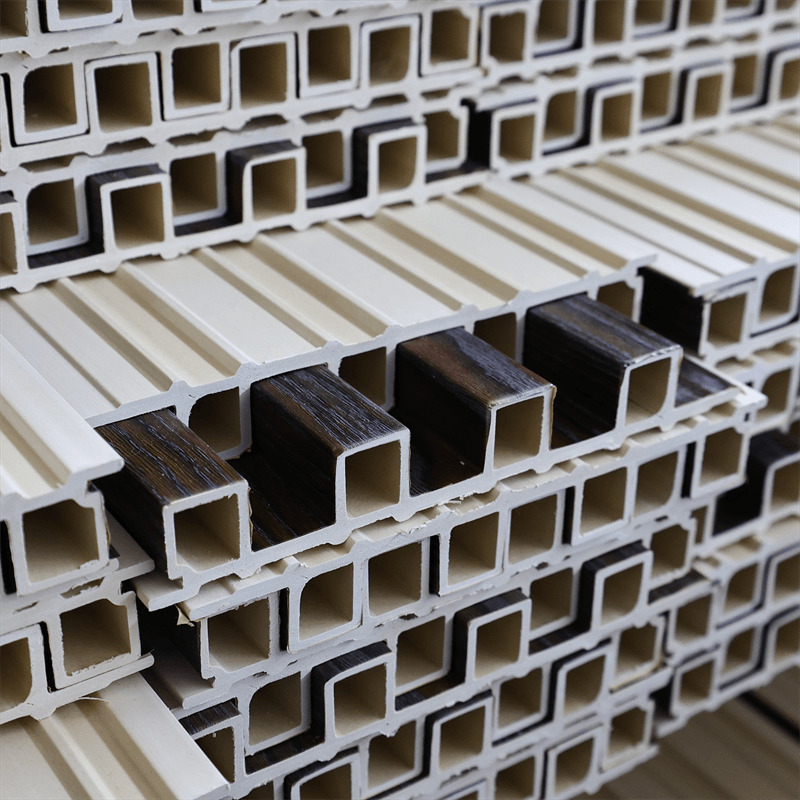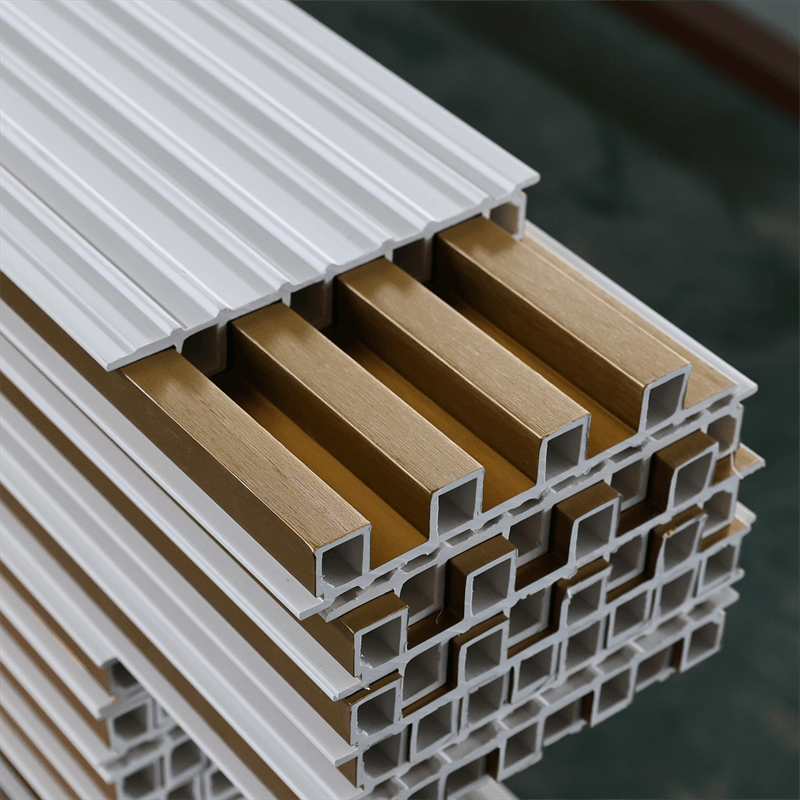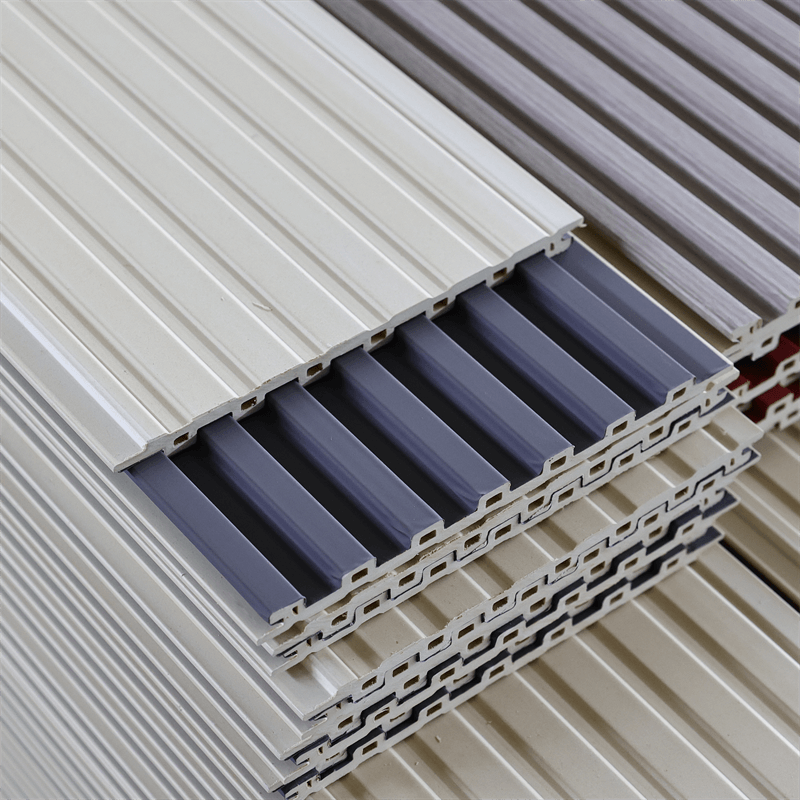As the world of interior design and construction continues to evolve, new materials and technologies are shaping the future of wall coverings.
One such innovation is the emergence of Wood-Plastic Composite (WPC) panels.
These panels offer a unique combination of aesthetics, functionality, durability, and sustainability, making them a promising solution for the future of wall coverings.
This essay explores the potential of WPC panels and their impact on design, performance, environmental sustainability, and versatility.

I. Aesthetics and Design Possibilities:
WPC panels open up a world of design possibilities with their versatile and customizable nature.
These panels are available in various colors, finishes, and patterns, allowing designers and architects to unleash their creativity and bring unique visions to life.
The natural wood-like appearance of WPC panels adds warmth, texture, and a touch of elegance to any space.
With advancements in manufacturing techniques, WPC panels can mimic the look and feel of real wood while offering enhanced durability and performance.
The availability of different textures and surface finishes further enhances the aesthetic appeal, enabling the creation of visually stunning and captivating wall coverings.
II. Performance and Durability:
WPC panels are engineered to withstand the rigors of daily use and environmental factors.
The combination of wood fibers and plastic in their composition results in a material that is highly durable, resistant to impact, scratches, and stains.
This durability makes WPC panels an excellent choice for high-traffic areas, such as commercial buildings, retail spaces, and educational facilities.
Unlike traditional wall coverings, WPC panels are moisture-resistant and less prone to warping or swelling when exposed to humidity or changes in temperature.
This characteristic makes them suitable for installation in areas with higher moisture levels, such as bathrooms or kitchens.
Additionally, their low maintenance requirements make them a practical and cost-effective option for long-term use.
III. Environmental Sustainability:
The future of wall coverings must prioritize environmental sustainability, and WPC panels are at the forefront of this movement.
These panels are made from a combination of recycled wood fibers and plastic, reducing the reliance on virgin materials and diverting waste from landfills.
By utilizing recycled materials, WPC panels contribute to the conservation of natural resources and reduce the carbon footprint associated with traditional wall coverings.
Furthermore, the production of WPC panels requires less energy compared to the production of materials like concrete or ceramic tiles, resulting in lower carbon emissions.
Additionally, WPC panels can be recycled at the end of their lifespan, promoting a more circular approach to material use and waste reduction.
The emphasis on sustainability aligns with the growing demand for eco-friendly building materials and supports the global movement towards more environmentally responsible practices.
IV. Versatility and Adaptability:
WPC panels offer versatility and adaptability, making them suitable for a wide range of applications and design styles.
Whether used in residential, commercial, or public spaces, these panels can transform the look and feel of any interior environment.
They can be used as accent walls, cladding, or decorative elements, adding visual interest and dimension to a space.
Additionally, WPC panels can be easily installed and removed, providing flexibility for future design changes or renovations.
Their lightweight nature makes them easy to handle and transport, reducing labor and installation costs.
The versatility of WPC panels allows for endless design possibilities, enabling architects and designers to create unique and inspiring spaces.

The future of wall coverings lies in innovative materials like WPC panels.
Their potential in terms of aesthetics, performance, sustainability, and versatility positions them as a game-changer in the design and construction industry.
As the demand for eco-friendly and durable wall coverings continues to grow, WPC panels provide a solution that combines beauty, functionality, and environmental responsibility.
With their customizable design options, durability, and low maintenance requirements, WPC panels offer a long-lasting and visually appealing alternative to traditional wall coverings.
The use of recycled materials and the ability to be recycled at the end of their lifespan align with the industry’s shift towards sustainable practices.
Furthermore, the versatility of WPC panels allows for endless design possibilities, enabling the creation of unique and inspiring spaces.
In conclusion, the potential of WPC panels in the realm of wall coverings is undeniable.
As we move towards a future that prioritizes aesthetics, performance, sustainability, and adaptability, WPC panels stand as a frontrunner in shaping the way we design and construct interior spaces.
Their emergence represents a significant step forward in creating a more sustainable and visually captivating built environment.

